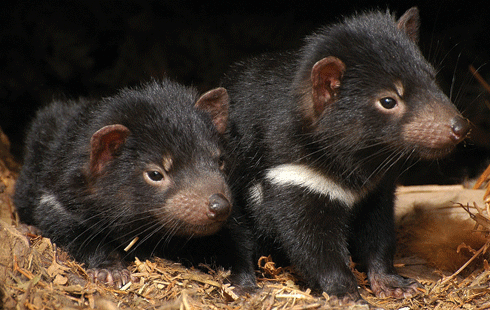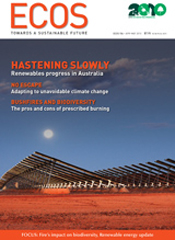
|
Published:
Devils on offshore islands
Up to 80 healthy Tasmanian devils will be released on Maria Island, off the east coast of Tasmania, in attempt to build an ‘insurance population’ against the devastating Devil Facial Tumour Disease (DFTD) – a contagious cancer that has been spreading through the devil population since 1996.

|
|
Tasmanian devil joeys. Credit: Tony Britt-Lewis
|
Captive insurance populations of devils exist in interstate zoos and on mainland Tasmania, but the devils on Maria Island will be the first to be released into the wild. It is hoped that these devils could be used, if necessary, to help re-establish healthy populations across mainland Tasmania if, as modelling suggests, the species becomes extinct in the wild.
Andrew Sharman, Manager of the Save the Tasmanian Devil Program, a joint federal and Tasmanian government initiative, said the aim of the first release of devils onto Maria Island is to observe and monitor the role that devils play in the landscape and the ecology of the area and the impact their introduction has on other native species which have not encountered the devil for many generations.
‘This first release will be a controlled project and, as a precaution, the males will be sterilised to prevent the population breeding and becoming established until we can be sure that this is an ecologically sustainable action for the devils and the island ecology,’ he said.
Whilst the Tasmanian Conservation Trust welcomed the use of Maria Island for this purpose, devil expert Androo Kelly from the Trowunna Wildlife Park, said the island is not big enough for the animals to survive in the long term.
Kelly is also opposed to introducing devils to Maria Island on ecological grounds – the island is home to other threatened species, such as the forty-spotted pardalote, one of the smallest birds in Australia.
The program is awaiting heritage and environmental approval from the federal and state government before the devils can be released.



